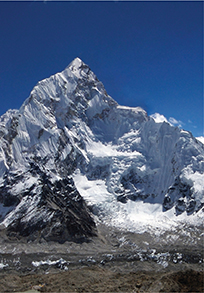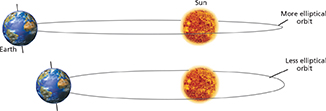Natural Climate Change
A number of natural forces contribute to changes in climate.  Natural causes of climate change include plate tectonics, variations in Earth's position relative to the sun, and variations in solar radiation, ocean circulation, and volcanic activity. These factors affect climates over different time frames. For example, a major volcanic eruption can have an immediate effect on climates. But changes in Earth's orbit occur much more gradually, affecting global climates over a 100,000- year period.
Natural causes of climate change include plate tectonics, variations in Earth's position relative to the sun, and variations in solar radiation, ocean circulation, and volcanic activity. These factors affect climates over different time frames. For example, a major volcanic eruption can have an immediate effect on climates. But changes in Earth's orbit occur much more gradually, affecting global climates over a 100,000- year period.
Plate Tectonics
In Section 22.4, you learned about the movement of Earth's plates. Tectonic-plate activity alters ocean circulation patterns and land erosion rates. These geographic changes, in turn, affect climates over ultra-long periods of tens, or even hundreds, of millions of years.
The Himalayas, shown in Figure 36, offer an example of how scientists have linked plate movement to long-term climate change. The Himalayas formed as a result of the collision of the Indo-Australian and Eurasian plates. As the mountains have risen, they have weathered relatively rapidly. The carbonic acid in rainwater reacts with minerals in the rock, forming carbon-containing compounds that wash down rivers and into the ocean. Eventually, the carbon is deposited in the form of carbonate rocks such as limestone. Over time, these processes have gradually reduced atmospheric carbon dioxide (CO2) levels and contributed to a long-term cooling of global climates over the past 60 million years.
Figure 36 Chemical weathering of the Himalayas contributes to the removal of CO2 from the atmosphere.

Earth's Position Relative to the Sun
Earth travels in an elliptical orbit around the sun. But the shape of the ellipse varies due to the gravitational pull of other planets. When its orbit is more elliptical, Earth spends more time farther from the sun and receives less sunlight during the year. This contributes to the occurrence of an ice age, a period when Earth's climates are colder than usual and glaciers cover large portions of the continents. Ice ages alternate with shorter warm periods, when Earth's orbit is more circular. Each cycle—an ice age interrupted by a warm period—lasts about 100,000 years. The cycle is also influenced by changes in the angle of Earth's axis. The most recent ice age ended between 10,000 and 20,000 years ago.
Figure 37 The shape of Earth's orbit around the sun changes due to the gravitational forces of other planets in the solar system. Interpreting Diagrams In which orbit does less sunlight reach Earth? How does this change affect Earth's climate?





